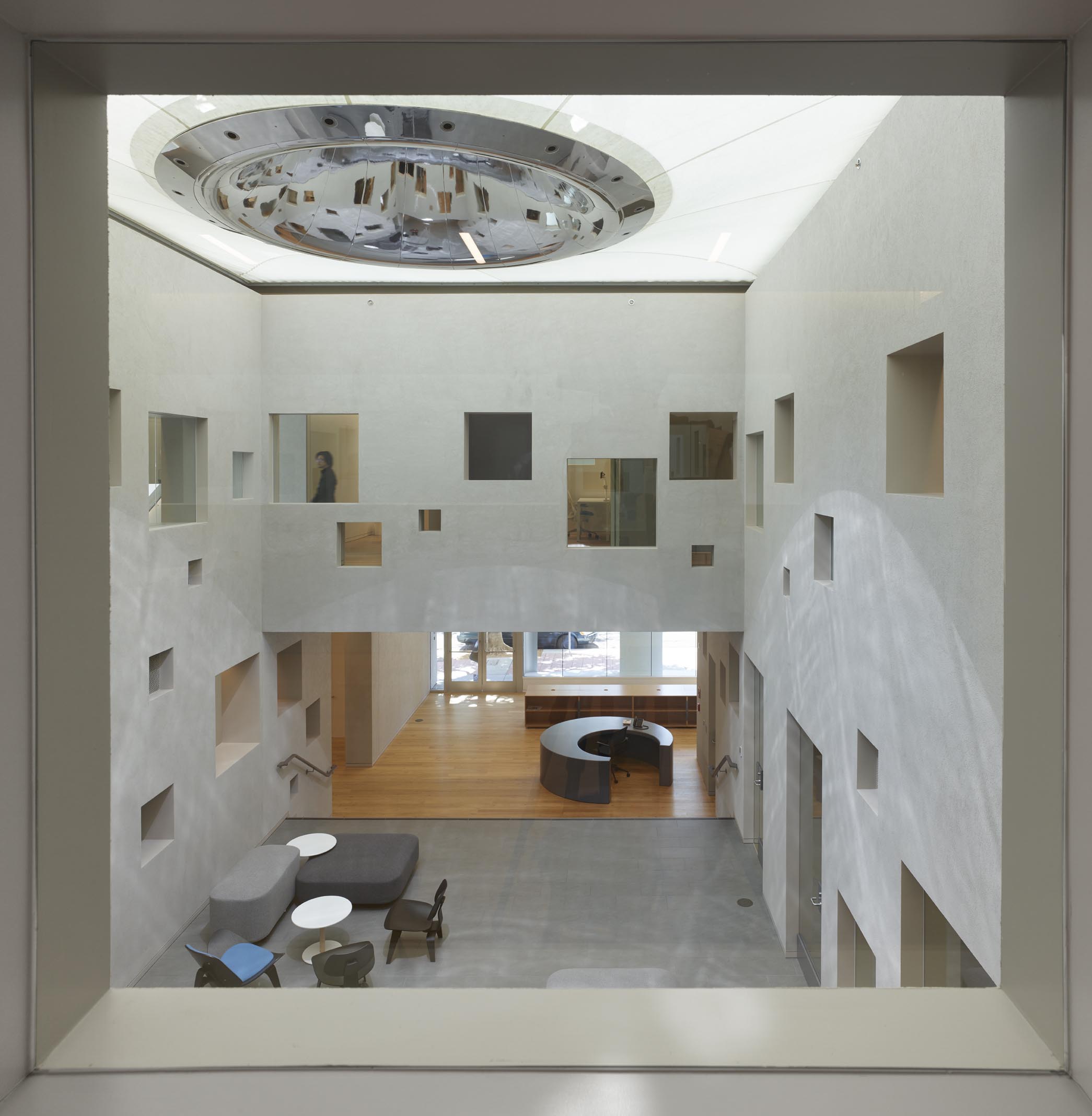By Jane Rohde
Introduction
This month, Sunbrella is bringing to you; Wayfinding: Not Just about Signage! Designing a complete wayfinding system improves a healthcare experience for patients, residents, visitors and families, and visiting physicians and care givers. In some cases, it may be a temporary stay or a first time visit to a complicated healthcare campus. At other times, a consistent wayfinding system may reinforce or cue residents with memory care issues that live in a smaller residentially-scaled community. Regardless of the setting, clear and easy to find spaces and locations, reduces stress for the person who is confused, potentially upset, or someone already worried about a procedure or a loved one.
Simplification and Focus
Too much information places an already stressed person into overload. Overload can be exacerbated not only by a confusing or inadequate wayfinding system, but also poor acoustics and lighting. A person doesn’t know where they are going, they can’t see well as they seek out signage or a person to assist them, and a noisy environment adds to the overall chaos for an individual, who simply wants to know how to get to their destination or loved one. There is a term, progressive disclosure[1] that is often referenced in the computer and tech world, but has good application to wayfinding; “maintain the focus of a user’s attention by reducing clutter, confusion, and cognitive workload – only presenting the minimum data required {effective wayfinding} for the task at hand {finding destination}”.[2]
Users and Wayfinding
Because people do not process information in the same way; some do better with a map or GPS, which can be both visual and auditory. Some facilities provide kiosks or apps that are used on their phones to help people find where they are going within complex healthcare settings. Designing a wayfinding system includes a global approach for a community or campus, requiring an evaluation of the arrival approach and evaluating all circulation paths (vehicular and pedestrian), including the departure or discharge process (where applicable). For residents living in an established community, the evaluation starts with “a day in the life of a resident” to better understand the sequence of life events and where a question would occur as a decision point; such as four intersecting corridors. No matter the setting, looking at each point in a circulation path and identifying where a decision has to be made is critical. Followed by prioritization of the location in the overall context of the setting. Choosing specific landmarks, artwork, accessories, color, music, or other types of cues can be beneficial for most users when provided in conjunction with signage; including directional signs, “named” rooms or spaces, and systematic numbering of spaces.
Garden Spot Village located in New Holland, PA is a continuing care retirement community that has an exceptional landmark within their community entry. There is a metal tree sculpture in the entry lobby that connects four major pathways – is visible from a staircase, and is accessible to a coffee bar, water station, fish tank, and reception desk. When the sculptor asked Steve Lindsey, the Executive Director, the significance of the sculpture prior to completing the design, Steve explained how the community supports a person-centered model of care – embracing everyday life down to the details. The sculptor came back with not only the exquisite tree as the center landmark and focal point, but also added Patina and Sparky – two movable squirrels. One-day Steve arrived in his office to find a tiny paper bag on his desk. Inside were two small scarfs, two of many that reflected the season and time of year for Patina and Sparky. Not only does the tree act as a landmark, but also a conversation starter and allows residents to participate in the sculpture on a seasonal basis!
[1] https://en.wikipedia.org/wiki/Progressive_disclosure
[2] Huelat, B. J., Position Paper for The Center for Health Design’s Environmental Standards Council, 2007 1.0. (https://www.healthdesign.org/system/files/WayfindingPositionPaper.pdf)
Garden Spot Entry. Architect: RLPS. Photographer: Nicole Lowder, JSR Associates, Inc.
Garden Spot Entry. Architect: RLPS. Photographer: Nicole Lowder, JSR Associates, Inc.
Branding
Sometimes branding does not align with the wayfinding within a healthcare campus or continuing care retirement community – which is a missed opportunity. If consistency is achieved, all components reinforce a positive experience as a person moves through interior and exterior space. All social media, websites, and other internet presence gives the user or consumer the opportunity to already be familiar with an organization before they even reach the arrival entry. Seeing something familiar, provides an initial comfort level that they are entering the right place as a first step in finding their final destination. This additional reinforcement supports recall by the user in anticipation of a visit. For examples and additional information about branding and wayfinding, see the Society for Environmental Graphic Design (SEGD), which is a multidisciplinary community creating experiences that connect people to place (https://segd.org/).







